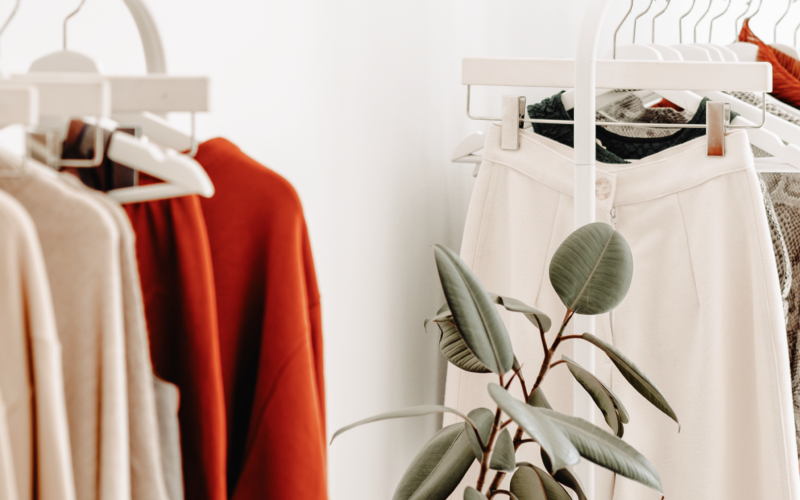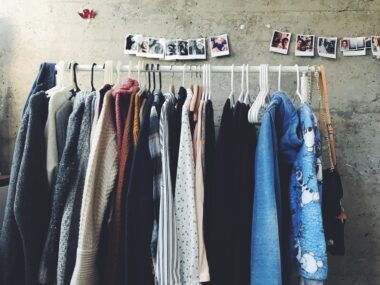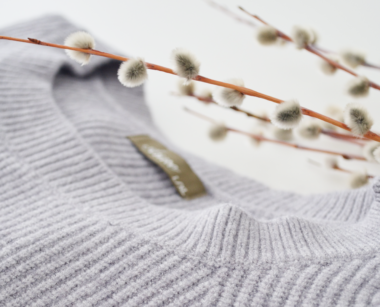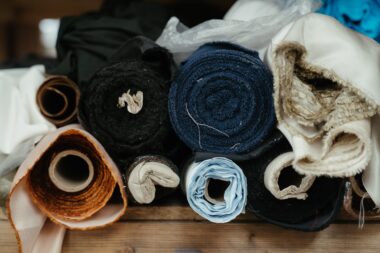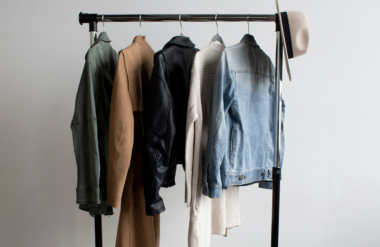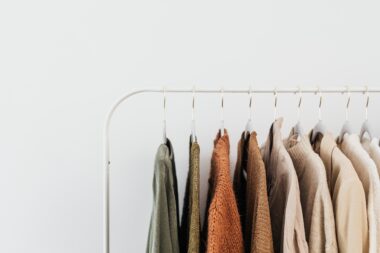If you’re even the slightest bit eco-conscious you’ve probably heard the recent outcry and damnation of fast fashion. Fast fashion brands can get a product from design to your cart in two weeks, planet be damned. But what about the alternative approach – slow fashion. How different is it really? And is it any more sustainable than fast fashion in the long run? We explore slow fashion and its philosophies to see how sustainable it really is.
What Is Slow Fashion?
Slow fashion focuses on the problem of overproduction and overconsumption, advocating for environmental and social justice in the fashion industry.
From a company point of view, slow fashion focuses on low-waste manufacturing processes, quality rather than quantity, and providing workers with safe working conditions and a living wage.
From a consumer point of view, slow fashion is about shopping with awareness of your impact on the environment and being selective in your purchases.
Slow Fashion Philosophies
Low-Waste Manufacturing: Manufacturing that respects the environment, mimimises textile waste and avoids harmful chemicals.
Simple Supply Chains: Localising and simplifying the supply chain as much as possible so raw materials and production centres aren’t thousands of miles and minimum worker pay requirements apart.
Shift From Quantity to Quality: Focusing on quality, low-impact materials and production methods rather than pumping out low quality profit driven garments.
Fair Working Conditions: Providing workers at all stages of the supply chain with safe, healthy working conditions and a living wage.
Transparency: Being open and honest about the supply chain sourcing, production and manufacturing processes.
How Is Slow Fashion Different From Fast Fashion?
The fast fashion model focuses on getting clothes from design, through production and into stores at lighting fast speed. Clothes are typically pretty affordable but unfortunately aren’t usually the best quality.
The slow fashion model isn’t exactly the opposite of this but it does aim to be more environmentally conscious throughout its supply chain. The slow fashion model moves at a slower pace by releasing fewer, higher priced styles per season.
Is Slow Fashion Better For The Environment?
It depends. Fast fashion isn’t good for the environment. That much we know. The fashion industry is responsible for 10% of global carbon emissions and is the second largest consumer of water worldwide. With our modern mentality of overconsumption, we buy more clothes (60% more) and keep them for half as long as we did before.
We tend to think of clothes as disposable when they’re priced lower, sometimes only wearing them seven or eight times before discarding them. When they’re priced low they’re often so poorly made, you’re only going to get a few wears out of them anyway. But they served their purpose for the night out or one thing you wanted them for. And since they cost you nearly nothing, what’s the harm in saying goodbye this early anyway?
Unfortunately when everyone has that mentality, tossed clothing can pile up. Canadians alone send 500 million kilograms of textiles to landfills every year. That behaviour isn’t going to change just by switching to a different clothing brand and giving yourself a get out of jail free card. For the slow fashion model to be better for the environment it requires everyone – manufacturers and customers alike, to change how we approach consumerism.
Quality Can Last A Lifetime
Slow fashion brands often focus on producing a small number of items made from quality materials, designed to last years. In contrast, clothes from fast fashion brands barely make it past 10 wears before being discarded. Holding on to your clothes for longer keeps them out of landfills, but having the option to keep them in the first place is key.
Right now we send the equivalent of a garbage truck of clothes to a landfill every second. And it isn’t just down to consumer behaviour. Even the most eco-friendly person isn’t expected to walk around in rags to avoid adding to our growing textile waste pile. Responsibility also lies with companies to produce long lasting, quality clothing that we can pass onto others instead of our only option being to throw it away or turn it into a dish rag because it’s falling apart.
Avoid False Economies
It’s no secret that one of the most attractive qualities of fast fashion is its low price. And unfortunately one of the deterrents to slow fashion is its seemingly high price. But when you do some quick fashion calculations, you might be paying more for fast fashion in the long run.
Say you buy a $30 fast fashion sweater, wear it ten times and have to throw it away because it shrank in the wash, or it’s starting to develop holes. You end up paying about $3 per wear.
But if you buy a high quality, slow fashion sweater for $100, you could potentially wear it ten times per year before needing to replace it after four years (longer if you take really good care of it). You end up paying about $2.50 per wear. And you haven’t had to replace your sweater four times over.
Higher Costs Can Pay Workers Fairly
It’s pretty easy to balk at slow fashion prices, especially when you compare them to the affordability of fast fashion. But fast fashion prices come at a cost, and just because you’re not paying it doesn’t mean someone else isn’t. A lot of cost savings in the fashion industry come from cheap labour. In some countries, garment workers make only $26 per month, often working more than 100 hours per month. Only 10% of the fashion industry pays their factory workers living wage.
Australian brand, Mighty Good Basics, is a slow fashion brand leading the way in paying workers a living wage. They work directly with Rajlakshmi Cotton Mills in India paying above minimum wage, overtime, rent allowance, and a 12% annual bonus. They also provide transportation, health benefits, education and subsidized meals to help support factory workers and their families.
Fewer Options Leads To Less Temptation
Since the invention of ready-to-wear clothing in the late 19th century, we’ve gone from two fashion seasons per year (Spring/Summer and Autumn/Winter) to a 52-season fashion model, with some fast fashion brands pumping out new styles every week. Globally, 100 billion items are produced each year, enough for 14 new items for every person on the planet. One of the keys to fast fashion’s success is stocking stores full of new styles to constantly bring customers back to buy the last item.
Alternatively, slow fashion brands often focus on a few basic or core pieces as part of their main collection, occasionally introducing new seasonal items. This strategy promotes more long-term, conscious consumption by removing the temptation of new items and focusing on wardrobe staples.
More Sustainable Materials
The fast fashion industry pumps out polyester like its no ones business. Polyester is found in 60% of clothes, makes up 20% of plastic produced worldwide, and produces triple the amount of carbon emissions as cotton production. As synthetic fibre, polyester doesn’t break down in nature and contributes to the 500,000 tonnes of microfibres in the ocean.
On the flip side, many slow fashion brands focus on producing clothes made from sustainable materials like organic and recycled cotton, organic linen and hemp. These materials come from plant material, often use less water in production and are biodegradable at the end of their life.
Paying More Makes You Buy Less
Research shows that our brains weigh up the pleasure we get from a purchase with the pain we feel about its price. The lower the price, the lower the pain. And so we can buy more lower priced items, with little to no pain and even get a little dopamine hit in the process. But when we only pay a small amount for something we also tend to value it less and dispose of it more.
But when we pay more for an item, we often want to make sure we get the most out of it. It’s not going to sit as well for your brain if you spend $100 on a shirt just for it to sit there unworn or for you to donate it the next week and buy another one. Paying a bit more for sustainably sourced, durable clothes can help limit how often you buy clothes and encourage you to wear what you do own more.
How To Shift To Slow Fashion
1. Care For The Clothes You Have
Whether your wardrobe is full of fast or slow fashion clothing, learning how to care for your clothes and extend their life is one of the most environmentally impactful actions you can take on the fashion front. The longer your clothes last, the longer they stay out of landfills.
Understanding fabric types, how to wash them and learning simple repair techniques can help sustainably care for your clothes, helping them last a lifetime.
2. Shop Second-Hand
If you’re looking for durability in your clothing, look to vintage. Some of these items have been around for 30+ years already and most of them could go for another 30, if taken care of properly. But you don’t need to stick to vintage to shop sustainability. The second-hand clothing market is enormous, especially if you include online resources.
Shopping second hand eliminates the high energy costs associated with new clothing production and keeps clothes out of landfills. Unfortunately about 80% of clothing donations end up in landfills or exported overseas. As large as the second-hand clothing market is, and even though it’s ideal for finding one-of-a-kind gems, it’s still largely untapped by most consumers.
3. Consciously Consume
A constant flow of new items, low price offers and more recently, greenwashing tactics, have been designed to get us to excitedly part with our money and add to a never ending pile of clothing waste. But it doesn’t have to be that way. A core tenet of slow fashion is its departure from fast fashions overconsumption and promotion of conscious consumption instead. Conscious consumption can show up by shopping your wardrobe first before buying a new item, shopping second hand, renting, or borrowing an item from a friend.
Some slow fashion advocates focus on longevity and getting the most out of their clothes through the #50wears challenge. The #50wears challenge came from research showing that fast fashion clothing worn 5 times and kept for 35 days produces 400% more carbon emissions per item per year than clothes worn 50 times and kept for a year.
Beyond our purchasing behaviours, conscious consumption includes researching and educating ourselves on fashion brand practices and approaches to sustainability. Unfortunately you can’t just take a brand’s word for it that they’re sustainable. Companies know that consumers will pay more for sustainable products and so greenwashing a product or company has become increasingly popular. Online resources like Good On You and Fashion Revolution can help you research how sustainable brands are, providing ratings and information on sustainability certifications.
Sustayn is designed to present the most useful recommendations for environmentally friendly approaches and items. We update links when possible, but note that links can be broken and subject to change.
